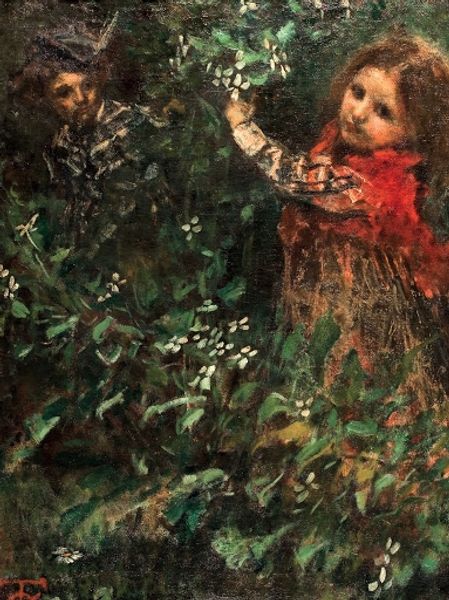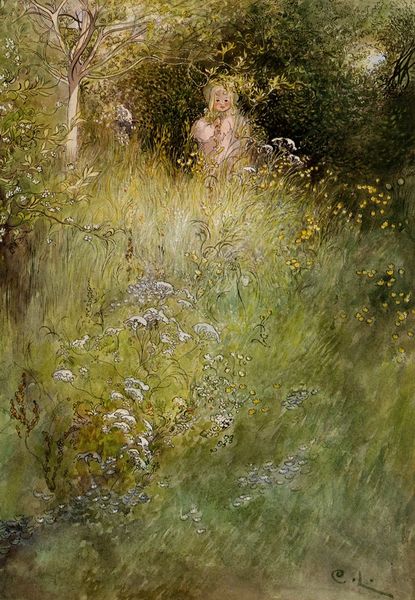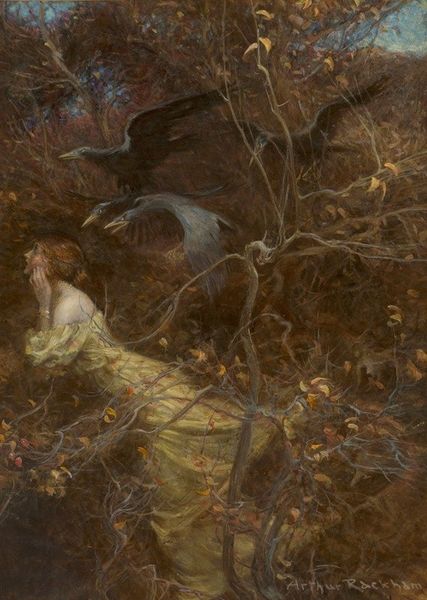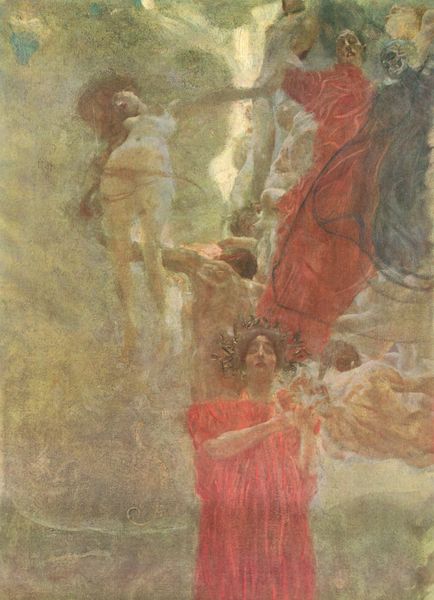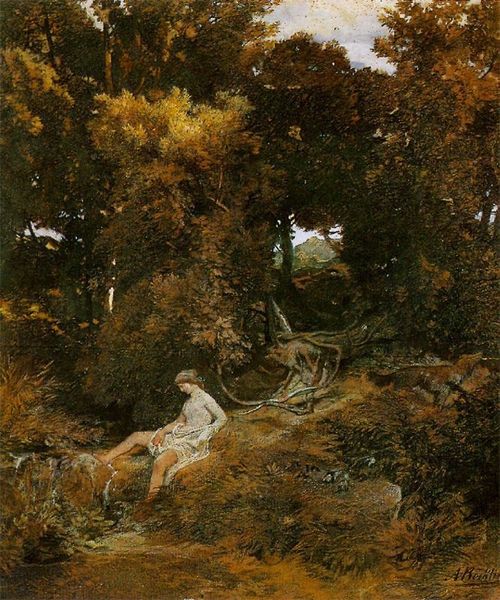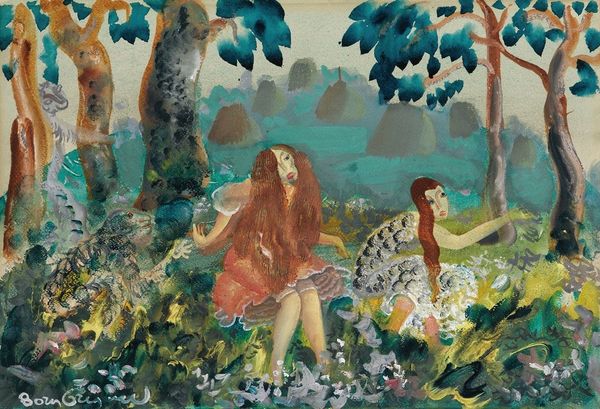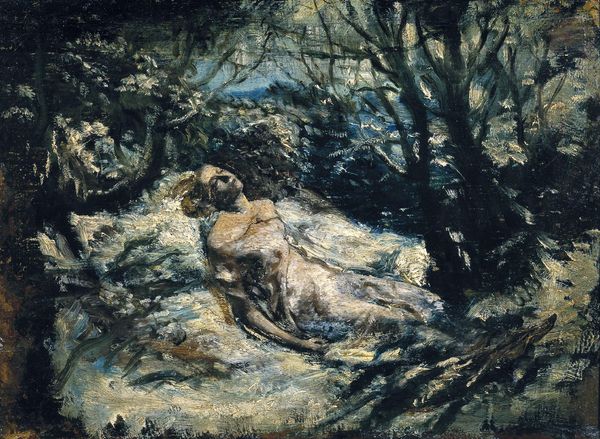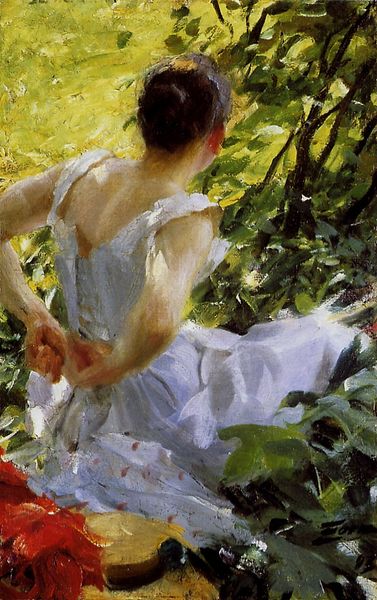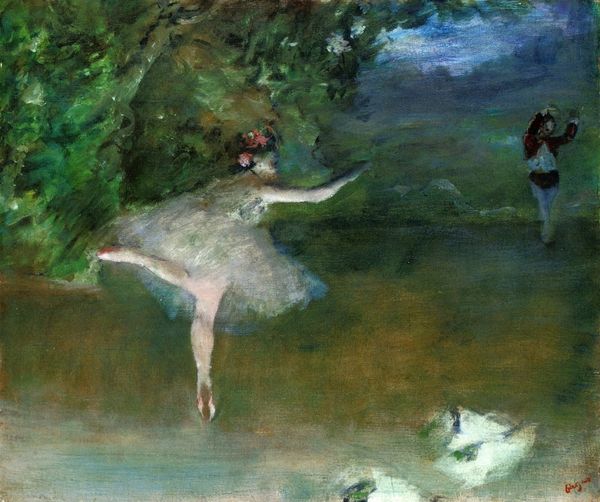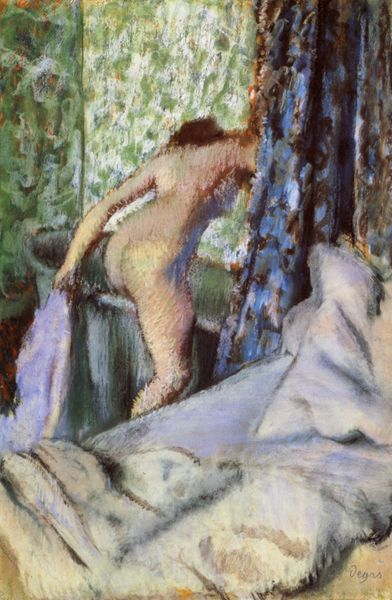
Dimensions: 14 x 20 cm
Copyright: Public domain
Curator: Let’s turn our attention to Giovanni Boldini's "The Hammock," painted in 1874. It depicts a woman reclining in a hammock, nestled amidst lush foliage. Editor: My first thought? Utter serenity. The brushstrokes, almost feathery, evoke a sense of languid ease, a summer afternoon dream. Curator: Boldini was a master of capturing the Belle Époque, and this piece certainly reflects the leisurely lifestyle of the upper class. Notice the umbrella casually cast aside; it symbolizes a temporary release from societal constraints. Hammocks themselves have historically represented places of refuge and contemplation. Editor: Exactly. But I also see a pointed contrast. The dark, tangled undergrowth surrounding her feels almost…claustrophobic. Is she truly free, or simply caught in a gilded cage of her own privilege? Her elaborate dress and carefully placed limbs hint at a performance, even in relaxation. Curator: That's a compelling point. Perhaps the hammock also acts as a liminal space between the social world and the natural world, a visual manifestation of psychological space. Look at the detailing of the hammock, adorned with tassles and intricate patterns—like a spider’s web. Is Boldini commenting on the artifice of beauty, trapping the subject? Editor: Absolutely. And I think situating this work within the rise of industrial capitalism is crucial. "The Hammock" speaks to the gendered expectations of leisure—the idea of women as decorative objects, removed from the world of work, even as their lives were deeply impacted by its demands and implications. She's in nature, but carefully curated. Curator: The parasol seems almost abandoned, suggesting something unspoken in the world, like it is meant as a shield from it. Yet the woman is still fully adorned with material splendor, resting inside the "shield." The contrast in messaging opens much interpretation, almost creating something spiritual. Editor: Agreed. The deliberate placement of the objects amplifies the artifice; a quiet narrative unfolding between subject and surrounding landscape, questioning leisure, womanhood, and status. Curator: The interplay between light and shadow really accentuates that feeling, highlighting her isolation amidst the greenery. Editor: Boldini has given us a lot to unpack here—beyond its surface beauty, "The Hammock" reflects nuanced societal realities and the often-complex relationships between freedom, nature, and womanhood. Curator: It reminds us that even seemingly tranquil scenes can hold deeper symbolic meaning.
Comments
No comments
Be the first to comment and join the conversation on the ultimate creative platform.
